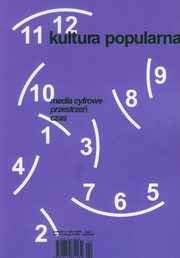Transmediality in Italy in the Fascist Era: Soundscape and Transmedia Resonances
Transmediality in Italy in the Fascist Era: Soundscape and Transmedia Resonances
Author(s): Paola ValentiniSubject(s): Social Sciences, Cultural history, Media studies, Communication studies, Cultural Anthropology / Ethnology, Theory of Communication, Social development, Sociology of Culture, Sociology of the arts, business, education, Economic development, Interwar Period (1920 - 1939), Film / Cinema / Cinematography, Sociology of Politics, Socio-Economic Research, Sociology of Art
Published by: Szkoła Wyższa Psychologii Społecznej
Summary/Abstract: Italy in the thirties is the focus of a complex system of media convergences, in which sound plays a leading role. Starting from 1924 (the year of foundation of the system of public radio broadcasting in Italy), and 1930 (when viewers were able to see the Crst “Talkies”), the Italian media developed an extensive network of technological convergences, economic connections, aesthetic resonances, and, generally speaking, cross -media practices.The flow of content across multiple sound media during the Fascist era creates a Guid distinction between “convergence culture” and “consumer culture” (Freeman, 2014: 3-4). It sheds new light on the transition from an economics of industrial production to an economics of industrialised consumption (Lacey2001:21-22), as well as on the growth of an industrial mass culture. Yet, not only does this consist of textual synergies and business relationships, in part already investigated, but it gives rise also to a specific dimension that, albeit for a limited period of time, also changes the texture of the sound itself (mechanical and recorded as actually perceived at the time), and its relationship with the image and the real world, making it the place of a marked transmediality.
Journal: Kultura Popularna
- Issue Year: 47/2016
- Issue No: 01
- Page Range: 30-39
- Page Count: 10
- Language: English

